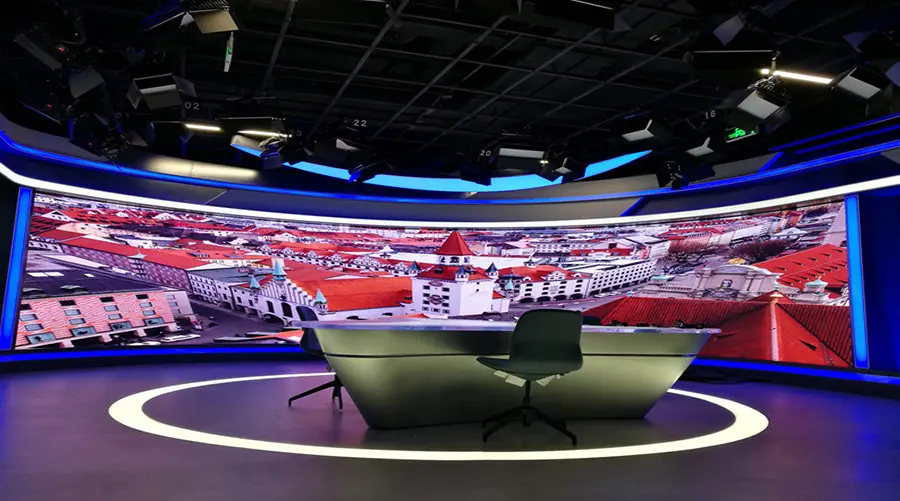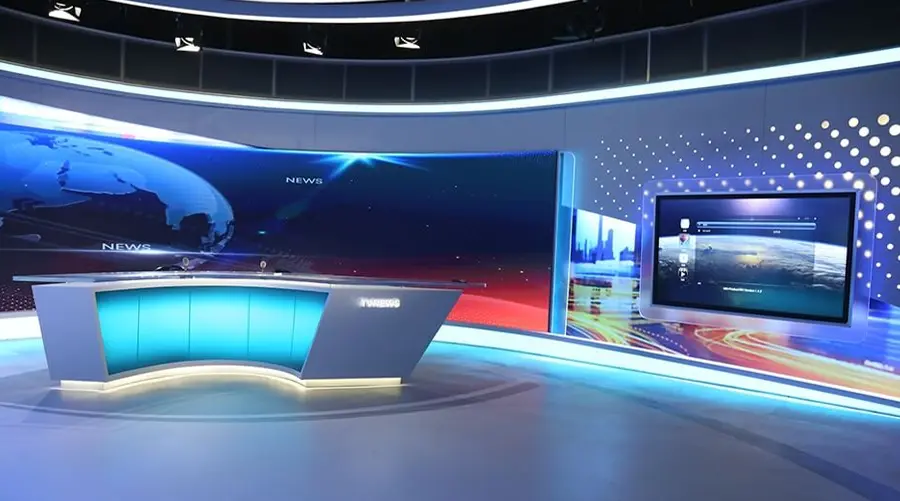In the fast-paced world of television broadcasting, a TV station LED display screen plays a critical role in delivering high-quality visuals that captivate audiences and enhance production value. Whether used for live news segments, weather reports, or breaking event coverage, modern LED display technology ensures clarity, flexibility, and reliability.
In today’s competitive media landscape, a TV station LED display screen is no longer a luxury—it's a necessity. With their ability to deliver crystal-clear images, vibrant colors, and dynamic content, LED displays have become the go-to solution for modern broadcast studios. Unlike traditional projection systems, LED panels provide consistent brightness levels without shadows or glare, ensuring optimal visibility under studio lighting conditions.
These displays are ideal for real-time data presentation, such as stock market updates, election results, and live sports scores. Their modular design allows for easy expansion and reconfiguration, making them adaptable to evolving studio layouts. Whether used as a backdrop for news anchors or integrated into control rooms, LED display screens enhance both visual appeal and functional efficiency.

Ultra-high resolution: From Full HD to 4K, LED displays ensure sharp visuals even when viewed up close by camera crews and on-air talent.
High refresh rate: Eliminates flickering and ensures smooth video playback, essential for high-speed camera movements and live broadcasts.
Wide color gamut: Offers accurate color reproduction for true-to-life visuals, crucial for branding consistency and professional photography.
Low latency input: Designed for real-time broadcasting with minimal delay between signal input and display output.
Beyond technical specifications, modern LED display systems also offer smart features such as remote management via mobile apps, automatic brightness adjustment based on ambient light, and compatibility with popular broadcast software platforms like vMix and OBS. These innovations streamline operations and reduce the need for manual adjustments during live productions.
A TV station LED display screen can be utilized across multiple areas within a broadcasting facility:
Newsrooms: Used as digital backdrops behind presenters, displaying headlines, graphics, and social media feeds to create an engaging atmosphere.
Control rooms: Provide real-time monitoring of multiple camera angles, audio levels, and broadcast signals for seamless production coordination.
Live events: Ideal for large venues hosting televised award shows, concerts, and sporting events where audiences need clear visibility from any seat.
Weather centers: Offer interactive maps and animations that help meteorologists explain forecasts and storm patterns more effectively.
One notable example is a national news channel that installed a curved LED wall in its main studio. The display serves as a dynamic background during live broadcasts, switching between immersive backgrounds, animated infographics, and split-screen interviews. This not only enhances storytelling but also strengthens brand identity through visually compelling content.

Every TV station has unique spatial and aesthetic requirements, which is why TV station LED display screens come with a wide range of customization options. From curved configurations to transparent panels, these displays can be tailored to match the specific layout and branding of a studio environment.
Modular assembly: Panels can be arranged vertically, horizontally, or in custom shapes to fit around set pieces or architectural elements.
Transparent LED walls: Allow natural light to pass through while still displaying vivid content—perfect for daylight-friendly studios.
Touch-enabled displays: Enable on-air talent to interact directly with data, charts, and multimedia content during presentations.
Branding integration: Custom color profiles and logo overlays ensure the display aligns with the station’s visual identity.
For instance, a lifestyle network incorporated a U-shaped LED setup into its talk show stage. The wraparound display enhanced audience immersion and allowed hosts to switch between pre-recorded clips, live polls, and guest introductions seamlessly. Such creative applications demonstrate how LED technology can elevate both aesthetics and functionality in TV production.
Proper installation is key to maximizing the performance and longevity of a TV station LED display screen. While many LED panels are lightweight and easy to mount, it's important to follow best practices to ensure stability, safety, and optimal viewing angles.
Professional mounting: Use certified installers who understand load-bearing structures and electrical wiring standards.
Calibration and testing: Conduct thorough color calibration and signal testing before going live to avoid last-minute issues.
Ventilation considerations: Ensure adequate airflow to prevent overheating, especially for enclosed installations.
Regular maintenance: Clean the screen surface regularly using anti-static cloths and schedule firmware updates to maintain peak performance.
Many manufacturers now offer turnkey solutions that include site assessment, installation, training, and ongoing support. Some systems even feature self-diagnostic tools that alert technicians to potential issues before they impact a live broadcast. Investing in reliable service and maintenance ensures long-term reliability and reduces downtime.

The evolution of TV station LED display screens continues at a rapid pace, driven by advancements in AI, augmented reality, and cloud-based content delivery. Here are some emerging trends shaping the future of broadcast display technology:
AI-powered content rendering: Intelligent algorithms adjust image quality in real time based on camera focus and lighting conditions.
Augmented reality (AR) integration: Virtual objects can be overlaid onto physical sets using LED panels, enhancing visual storytelling during live broadcasts.
Cloud-managed displays: Remote access to display settings enables broadcasters to manage content from anywhere in the world.
Flexible and foldable LED modules: Lightweight, portable panels allow for quick setup in temporary broadcast locations or outdoor reporting scenarios.
As these technologies mature, we can expect even greater interactivity and personalization in TV production. For example, future LED displays may allow viewers to customize what they see on-screen through companion apps or voice commands. These innovations will redefine how content is created and consumed, making the broadcast experience more immersive than ever before.

A TV station LED display screen is more than just a visual tool—it’s a strategic asset that enhances storytelling, improves production efficiency, and elevates the overall viewer experience. As broadcast technology continues to evolve, investing in high-quality LED display solutions ensures your station remains competitive and future-ready.
Whether you're upgrading an existing studio or building a new one, selecting the right LED display system involves careful consideration of resolution, brightness, scalability, and integration capabilities. Partnering with a trusted provider can help you navigate the complexities and choose a solution that meets your station’s unique needs.
Ready to take your studio to the next level? Contact us today for a personalized consultation and discover how our LED display solutions can transform your TV station.
Hot Recommendations
Hot Products
Get a Free Quote Instantly!
Talk to Our Sales Team Now.
If you are interested in our products, please contact us promptly
Reach out to our sales team to explore customized solutions that perfectly meet your business needs and address any questions you may have.
Email Address:info@reissopto.comFactory Address:Building 6, Huike Flat Panel Display Industrial Park, No. 1, Gongye 2nd Road, Shiyan Shilong Community, Bao'an District, Shenzhen city , China
whatsapp:+8615217757270